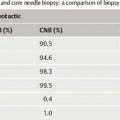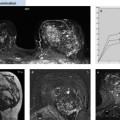1 Patient Information, Guidelines, and Directives Patient information covering medical issues should put the patient in the position of being able to understand and evaluate the significance of an illness and its symptoms. It should encompass the benefits, risks, and side effects of medical procedures, but also warn against ineffective, unnecessary, and detrimental procedures. Like professional medical guidelines, comprehensive and objective patient medical information should be based upon the best available, up-to-date scientific research (evidence-based medicine [EBM]). The following is a small selection of the websites offering patient information: www.cancer.net: American Society of Clinical Oncology www.asbd.org: American Society of Breast Disease www.lbbc.org: Living Beyond Breast Cancer www.cancer.gov: National Cancer Institute www.komen.org: Susan G. Komen for the Cure www.nci.nih.gov: National Cancer Institute www.cancer.org: American Cancer Society www.nccn.org: National Comprehensive Cancer Network http://breastcancer.about.com Medical guidelines, also called clinical practice guidelines or practice guidelines, are systematically developed decision-making aids for physicians, aimed to improve the quality of medical care by providing an up-to-date, scientific evidence-based statement on the knowledge and standards of the medical profession. As guidelines, they are designed to assist practitioners by providing an appropriate “decision and action corridor” for specific health problems, from which one can, and sometimes must, deviate when special circumstances justify an alternate approach. The implementation of guidelines lies within the responsible physician’s margin of discretion for each specific medical case.
Patient Information
Guidelines
Stay updated, free articles. Join our Telegram channel

Full access? Get Clinical Tree








